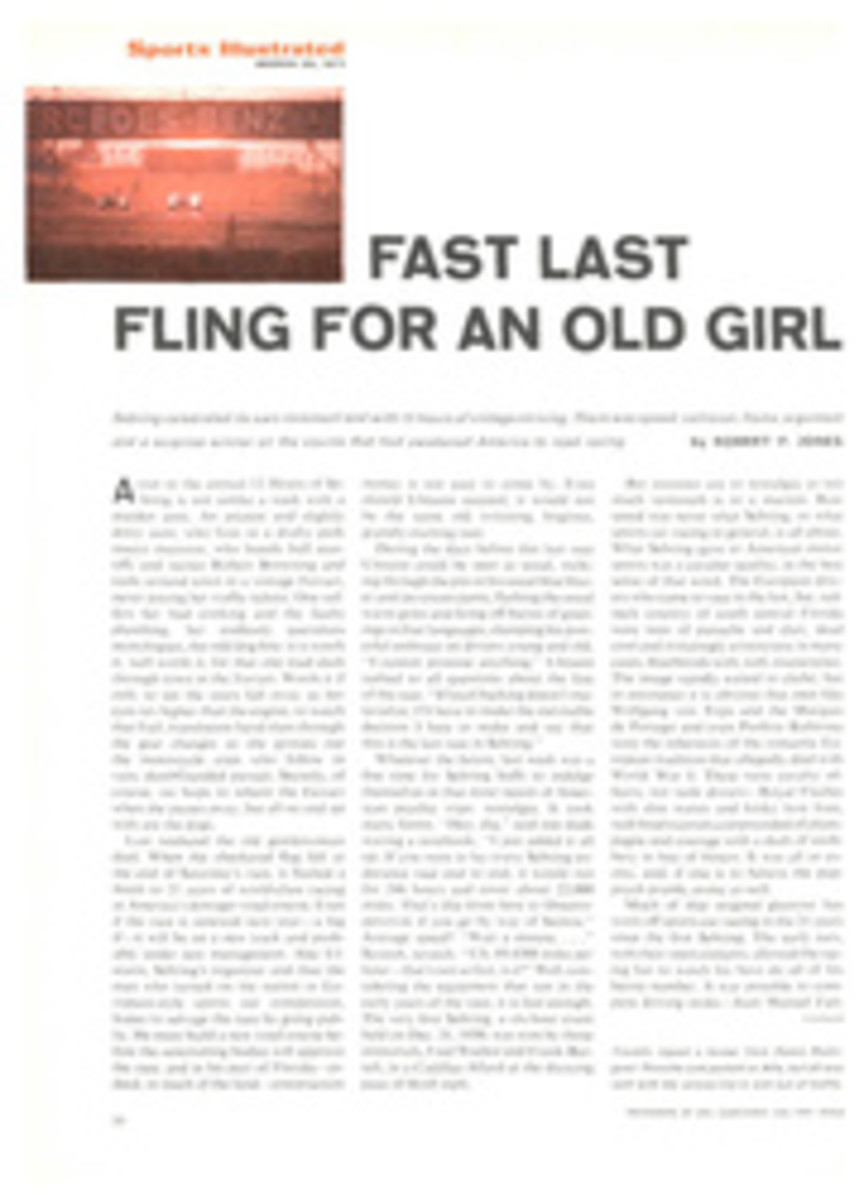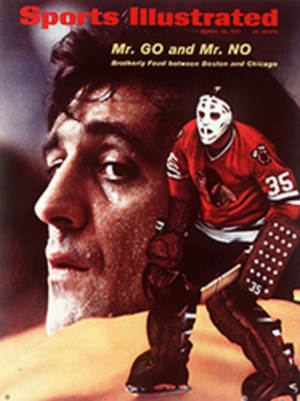
SCORECARD
THE HAYWOOD CASE (CONT.)
The selection of three underclassmen—Tom Riker, a South Carolina junior, and sophomores Barry Parkhill of the University of Virginia and Jim Chones of Marquette—by the Virginia Squires during the second phase of the American Basketball Association draft was another spin-off of the increasingly far-reaching case of Spencer Haywood.
Unlike the signing of Haywood, whose premature entry into the pro game was facilitated by the ABA's so-called "hardship" clause which permits the hiring of an impoverished college player before his class has graduated, the selection of these three is a direct assault on the draft policies of both pro leagues. The Squires make no contention that the three are special cases of any sort. Earl Foreman, Squires owner who made his choices over the objections of ABA Commissioner Jack Dolph, said:
"I decided to draft according to the bylaws of the ABA as we think they should be interpreted under the precepts of general law and recent court decisions. It was a calculated risk. The future will tell if we are right or wrong."
Foreman's hope of being proved right rests largely on an injunction issued three weeks ago by the federal judge who is hearing the nettlesome Haywood case in Los Angeles. He enjoined the National Basketball Association from enforcing its wait-until-the-player's-class-graduates eligibility rule. The Squires' draft selections indicate that they feel the court injunction not only will be made permanent but also will be extended beyond the NBA to the ABA (and then, presumably, to the National Football League).
The irony of this lies in the fact that the people hurt by the draft rules as they stood were players who might have wanted to turn pro instead of finishing college, not the owners who are risking a change. The system now challenged by owners in both leagues has operated virtually unchanged for 25 years. During that time it helped provide a good farm system for the pros by allowing an attractive, self-supporting college game to thrive. It was also the system under which pro basketball grew to maturity, and essentially identical to the one under which pro football did the same. Alas, it also may have been illegal.
The owners seem to have judged the situation poorly. Instead of a stable player procurement system which, until competition from the ABA arose, gave owners the upper hand in player negotiations and presumably would do so again once the leagues merge, they are now heading for a freewheeling open market that may give the rookie players the advantage permanently.
FIRST THINGS FIRST
In Pennsylvania wrestling is a sport dear to the heart, as has been demonstrated in the case of Mike Marino.
Mike was scheduled to compete in the Western regionals of the Pennsylvania Interscholastic Athletic Association high school tournament. But 250 teachers in the Canon-McMillan school district in Canonsburg, Pa. were threatening to strike. Under the rules of the PIAA, if a school is closed because of a strike all athletics are terminated, so Mike would have been ineligible.
Aware of this, the teachers voted to postpone their strike, and Mike competed and won his event in the regionals.
LEGEND DISMISSED
The big uproar in the Nevada legislature this month has been whether the mustang should be declared the official state animal. The answer seems to be no.
Vehement counterproposals have been made by sheep ranchers, who disapprove of any wild animal that eats grass and drinks water in that arid land. Suggested alternatives include the bighorn sheep, which lives on rocky crags and is rare, and the burro, also rare and kind of dumb. The burro, at least, does not wander all over the place eating the sparse feed the range has to offer.
But competition for feed is not the only objection to the mustang. Writing in The Environmental Journal, Anthony Amaral, an acknowledged expert on the wild horse of the West, holds that the mustang does not exist anymore, though plenty of wild horses, about 20,000 of them, now roam the country, perhaps half of them in Nevada.
"The mustang—that tough, hotblooded descendant of the Spanish horse and North African ancestors—disappeared before the turn of the century," Amaral contends. "By 1940 the true mustang was in the memorial league of the passenger pigeon."
The wild horse of today is, it appears, the descendant of no-good horses that ranchers turned out to run free.
TUCUMCARI TIDBITS
One of the oddities about The Tucumcari (N. Mex.) Daily News is that its staff is all ladies, including the sports editor. For a while it also had an irate subscriber.
Every morning the subscriber would hear the paper land with a thonk on his front porch. Going to the door, he would find no paper at all.
Eventually, lying in wait, he heard the thonk and instantly opened the door, just in time to see a large crow winging away with his newspaper.
So now everyone tells the Daily News that the paper is "for the birds."
Meanwhile, the subscriber is trying a sporting solution—he races the crow for the paper. You have to move fast to keep on top of the News in Tucumcari.
ANONYMOUS CITY
Televising the Pro Bowlers' Tour stopover in Winston-Salem, N.C., the American Broadcasting Company's best minds were confronted with a critical decision. The tournament was sponsored by R.J. Reynolds Co., which makes Winston and Salem cigarettes. But regulations prohibit cigarette advertising on TV. So the network decided not even to mention the name of the city in which the tournament was being held—at least not until the very end of the game.
Which led the Winston-Salem Journal to inquire editorially if similar restrictions would be in order in the case of Salem, N.J., Marlboro, N.Y., Chesterfield, S.C. or even, maybe, Winston Churchill.
THE MORE IT CHANGES
The idea that three balls, rather than four, constitute a walk is being tested in baseball's spring training and Commissioner Bowie Kuhn has been keeping an eye on it while, at the same time, keeping his mouth shut about it. In Arizona experiments between Cleveland and Oakland there has been an average of 19 walks per game, which pretty much establishes that if baseball wants more men on base to make the game more exciting, this will do it. On the other hand, there are those who hold that a walk is not all that thrilling to witness.
Fiddling around with the walk and strikeout rules is not new to baseball. In 1880 the rules committee changed the walk from nine balls to eight; in 1881 they went to seven balls; three years later a walk was awarded on six balls; in 1886 back to seven balls; in 1887 to five balls. But the strikeout then was called on four strikes instead of three. In 1888 three strikes became out once more, and in 1889 the walk went to four balls.
There is nothing new under the sun.
FINDING THE BLEEPING BALL
The idea of inventing a golf ball that one cannot lose must have occurred to mankind from time to time, only to be abandoned as impossible.
Nothing is impossible, as the Penn Central Railroad discovered recently when it lost 277 freight cars. An Edinburgh businessman, Stephen Horchler, has invented the unloseable golf ball. It contains a tiny radio transmitter and, when lost, sends out a distress signal. It has, says Horchler, the same playing characteristics as any good ball.
On the 1st tee you put your Horchler ball next to a transistor radio and tune in until you get a high-pitched signal. Then you move the ball three feet away from the radio and tune in again, until you get a stronger signal. Switch off and play.
Very well, the ball goes into the rough. Turn on the radio and walk toward where the ball seemed to go. Listen and concentrate as you search the area where the bleeps from the ball are loudest.
STRIKE
Whether professional baseball is a sport or a business has long been debated in the U.S. Now Thailand is taking a hard look at bowling, golf and skating. The Thai Supreme Court has, in fact, declared that bowling is a form of entertainment, not a sport, and thereby is taxable. Furthermore, the taxes may be applied retroactively, leading alley owners to predict bankruptcy.
Now owners of skating rinks and golf courses have begun to shudder. The director general of the Thai Revenue Department announced that he was considering applying the bowling principle to those entertainments—or sports.
TRY MONTANA
For years Idaho has promoted tourism by emphasizing its fine hunting and fishing. Last year more than 11,000 nonresidents hunted in Idaho, many of them employing the services of the state's professional packers, outfitters and guides, none of whom are patronized by more than a handful of the state's residents. Now it would appear that many of these aides to the outdoorsman will have to go out of business.
Idaho no longer wants to share its hunting with sportsmen from other states. The Idaho legislature has approved a bill to let the game and fish department restrict the number of hunting licenses issued to nonresidents.
"The local hunter," explains a member of the game commission, "resents the outsider who hunts in Idaho. Generally, the nonresident hunter is better equipped and is a better shot, and because he is willing to pay good money to hunt deep in the wilderness, he is more successful than the local. But to keep the nonresident hunter out is contrary to wise game management."
Well, there is always the scenery.
A BOOKIE AND A GENTLEMAN
A reputation for reliability is essential to the bookmaker's trade. On the other hand, for a bookmaker to return money that has been wagered and lost is downright supererogatory.
But it has happened. Philip Laister, manager of a betting shop near Birmingham, England, disputed a referee's verdict that cost Henry Cooper, veteran British heavyweight, his British, European and Commonwealth boxing titles and gave them to Joe Bugner (page 26). The referee ruled the fight all even at the end of 14 rounds, gave the 15th to Bugner and awarded him the victory by a quarter of a point.
Disgusted, Laister announced he was returning all moneys bet on Cooper, who had been favored at 2-to-5 odds.
SPORTING SCIENCE
It is nine times more dangerous, from the standpoint of fatalities, to drive an automobile than to play football, which is, nevertheless, the most dangerous game in the world.
So says The Encyclopedia of Sports Sciences and Medicine, a weighty publication (6½ pounds) priced at $39.95. The book, sponsored by the American College of Sports Medicine, was compiled from hundreds of manuscripts submitted by doctors, coaches, physical-education teachers and the like. Some tidbits:
A lumberjack may expend from 4,120 to 7,210 calories a day, but a golfer burns only five calories a minute.
In high school football the end run causes more injuries than any other play.
Some training exercises, like full squats and duck waddles, are bad for the joints.
If pep talks are ethical to inspire athletes, so is hypnosis.
ILLUSTRATION
THEY SAID IT
•Denny McLain, the Washington Senators' pitcher, on the value of preseason conditioning: "All that running and exercise can do for you is make you healthy."
•New York fight fan: "Why should I feel sorry for Ali? He got $2.5 million dollars for being beaten up. Most of us in this city have to pay for the privilege."

